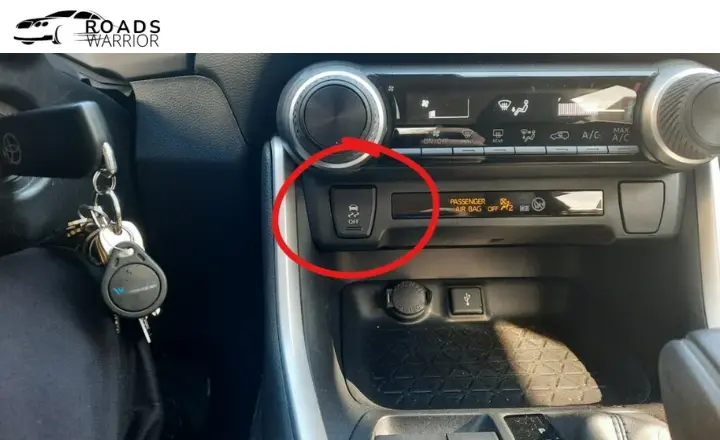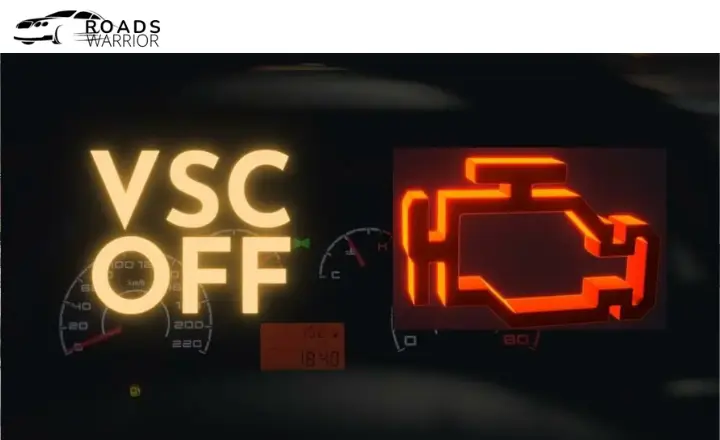Since 1995, Toyota has quietly revolutionized how we drive by introducing Vehicle Stability Control (VSC). But what exactly is the Toyota RAV4 VSC Light, and how does it work? As a driver, you may have wondered about the mysterious warning light that occasionally flickers on your dashboard. Don’t worry, you’re not alone! In this article, we’ll dive into the world of VSC and answer all those burning questions swirling around in your mind. By the end of this guide, you’ll be equipped with the knowledge to decode that enigmatic warning light and become an expert in navigating the road with confidence.
WHAT IS VSC?
VSC, short for Vehicle Stability Control, represents a pivotal advancement in automobile safety. Toyota’s pioneering system has proven to be a game-changer since its inception in 1995. From its role in preventing skidding and loss of control to effectively managing traction, VSC offers an essential layer of protection on the road.
With a federal mandate coming into effect in 2012, VSC asserts itself as a vital standard feature across the automotive landscape. This system acts as a guardian angel by intelligently redistributing power and applying targeted braking force to counteract potential wheel slippage. Drivers can navigate corners with heightened confidence and stability, ultimately empowering them to meet unexpected challenges head-on.
WHAT TOYOTA RAV4 VSC LIGHT MEANS?
When the VSC light Toyota is on, it indicates that the Vehicle Stability Control system is inactive. This could be due to manual deactivation or a system malfunction. Either way, it can lead to reduced control during cornering, especially on slippery roads. Addressing the issue promptly is essential to ensure safe and stable driving conditions.
Turning the VSC system back on will sometimes resolve the issue and turn off the warning light. If there’s a persistent problem with the VSC system, it’s essential to have it diagnosed and repaired by a qualified mechanic. Ignoring this warning light can compromise your vehicle’s stability and safety while driving in challenging road conditions.
BENEFITS OF TOYOTA RAV4 VSC LIGHT
The Vehicle Stability Control (VSC) system offers essential benefits, as the accompanying video explains.
- It applies braking power to maintain stability when cornering and modulates engine speed to control swerving.
- Without VSC, your car may sway unpredictably during turns, especially at higher speeds, posing a risk of loss of control and potential accidents.
- Traction control is not synonymous with VSC, though they share standard components.
- While traction control aids in maintaining control during acceleration and addresses slippage after traction is lost, VSC focuses on stability during cornering and swerving.
- Both systems ensure the vehicle’s safe operation under varying road conditions.
WHY THE TOYOTA RAV4 VSC LIGHT IS ON?
The Toyota Rav4 VSC can come on for a few specific reasons.
- One possible cause is if the VSC system has been manually turned off.
- Another reason could be a malfunction within the VSC system itself.
- To accurately determine the issue, it is essential to have the car diagnosed by a qualified mechanic.
- The mechanic will conduct thorough diagnostic tests to identify the exact cause of the VSC light Toyota coming on.
- They will check for error codes related to the VSC system stored in the car’s computer system.
- They will inspect all relevant components and sensors of the VSC system for any signs of damage or malfunction.
- Once the root cause is identified, the mechanic can recommend appropriate repairs or replacements to resolve the issue.
HOW IT WORKS
Without Vehicle Stability Control (VSC), a car can lose control in slippery conditions, especially during turns. When the front wheels slip, the car may fail to turn as intended, potentially losing traction and control. If the rear wheels slide, the vehicle may spin out.
VSC’s Protective Functionality
With VSC, engine power is reduced, and brakes are applied automatically to regain control when wheel slippage is detected. If the front right wheel starts slipping, the system reduces engine speed and applies additional braking power to that specific wheel without affecting the others.
Automatic Operation and Safety Benefits
The VSC system functions independently and requires no manual activation. VSC significantly enhances driving safety in suboptimal road conditions by maintaining harmony between steering direction and vehicle behavior during reduced traction scenarios.
Reliable Performance in Difficult Situations
In addition to mitigating overcompensation risks following tire regaining traction, VSC ensures drivers can safely navigate challenging circumstances such as skidding or sliding with enhanced precision and control.
Enhanced Driver Confidence
By providing seamless intervention when needed without any input from the driver, VSC instills confidence by ensuring optimal vehicle performance under adverse driving situations.
Improved Road Safety
VSC is a crucial technology for preventing accidents caused by loss of control due to wheel slippage or sliding, contributing to overall road safety for drivers and passengers alike.
HOW TO TURN IT ON/OFF

Locating a Safe Spot:
When you need to deactivate the vehicle stability control (VSC) and traction control (TRAC) system, find a safe location to bring your vehicle to a stop.
Engaging Deactivation:
Press and hold down the VSC traction control button near the gear shifter or steering wheel until the VSC OFF indicator light illuminates the dashboard, indicating that the system has been deactivated.
Assessing Deactivation:
Upon deactivation, you might also notice the TRAC OFF indicator light appearing on the dashboard or receive a relevant message depending on your Toyota model.
Reactivating the System:
To re-engage the VSC system, first ensure that the VSC OFF light is illuminated, signifying that it is off. Then, press the VSC traction control button again.
Confirming Reactivation:
After pressing the button, observe both VCS and TRAC lights disappearing from the dashboard. If they continue to show, the system may have a fault.
VSC BUTTON LOCATION

In recent Toyota and Lexus vehicles, a VSC button is standard equipment. Usually located near the steering wheel or gear selector, it can be found on my 2021 Toyota RAV4 in the same area. Older models may not have this feature as it wasn’t included in those systems then. If unsure where to locate the VSC button, consult your owner’s manual for information related to driving support systems or a similar section.
WHEN TO TURN IT OFF
Despite Toyota’s general recommendation against turning off the VSC, there are specific situations in which deactivating the system is necessary. One such instance occurs when both front wheels become entrenched in mud or snow, requiring the vehicle to be rocked free. This maneuver can only be executed with VSC and TRAC systems switched off, allowing the necessary traction to escape the predicament.
It’s important to understand that while deactivating the VSC may seem counterintuitive, it serves a crucial purpose in specific scenarios. By enabling drivers to rock their vehicles free from challenging terrain, this feature provides an essential safety measure when faced with immobilizing conditions like mud or snow.
WHAT A FLASHING VSC LIGHT MEANS
When the VSC light flashes, and the TRAC light comes on, it indicates a system malfunction. These warning lights should not be disregarded or overlooked, as they signal potential safety and performance issues. Seeking the expertise of a qualified mechanic is essential to diagnose and address these faults effectively.
IS IT SAFE TO DRIVE?
The vehicle stability control (VSC) system is an important safety feature in vehicles designed to prevent accidents. When operating correctly, VSC ensures the vehicle moves in the direction the steering wheel is turned, providing more control to the driver.
Driving for an extended period with the VSC warning light illuminated is not recommended unless the system is manually deactivated to get out of a stuck situation. Although having VSC disabled won’t immediately damage the vehicle, you miss out on its potentially life-saving capabilities.
Studies have shown the significant safety benefits of VSC. An analysis across six states examined police-reported crashes, comparing vehicles with VSC-enabled versus disabled. Of 13,987 crashes involving vehicles without VSC, there was an 11.2% higher rate of multi-vehicle front crashes than the 5,671 crashes with VSC-equipped vehicles. The vehicles lacking VSC saw over 50% more single-vehicle accidents.
The evidence demonstrates that VSC helps avoid accidents. For your safety and that of your passengers, fix any VSC system issues promptly to keep this feature functioning properly. Driving with a fully operational stability control system could mean distinguishing between a crash and confidently maintaining control.
VEHICLE STABILITY CONTROL IS FOR YOUR SAFETY
Toyota is at the forefront of safety systems, with every new vehicle equipped with Vehicle Stability Control (VSC) as standard. VSC is designed to enhance your driving experience by ensuring stability on the road. If you notice the Toyota VSC light on, it’s imperative to take action.
If the stability control system has been accidentally turned off, it should be reactivated right away. Otherwise, a qualified mechanic should diagnose and address any underlying issues to ensure secure driving. With Toyota’s commitment to safety technology, you can confidently drive knowing that your protection is prioritized.
